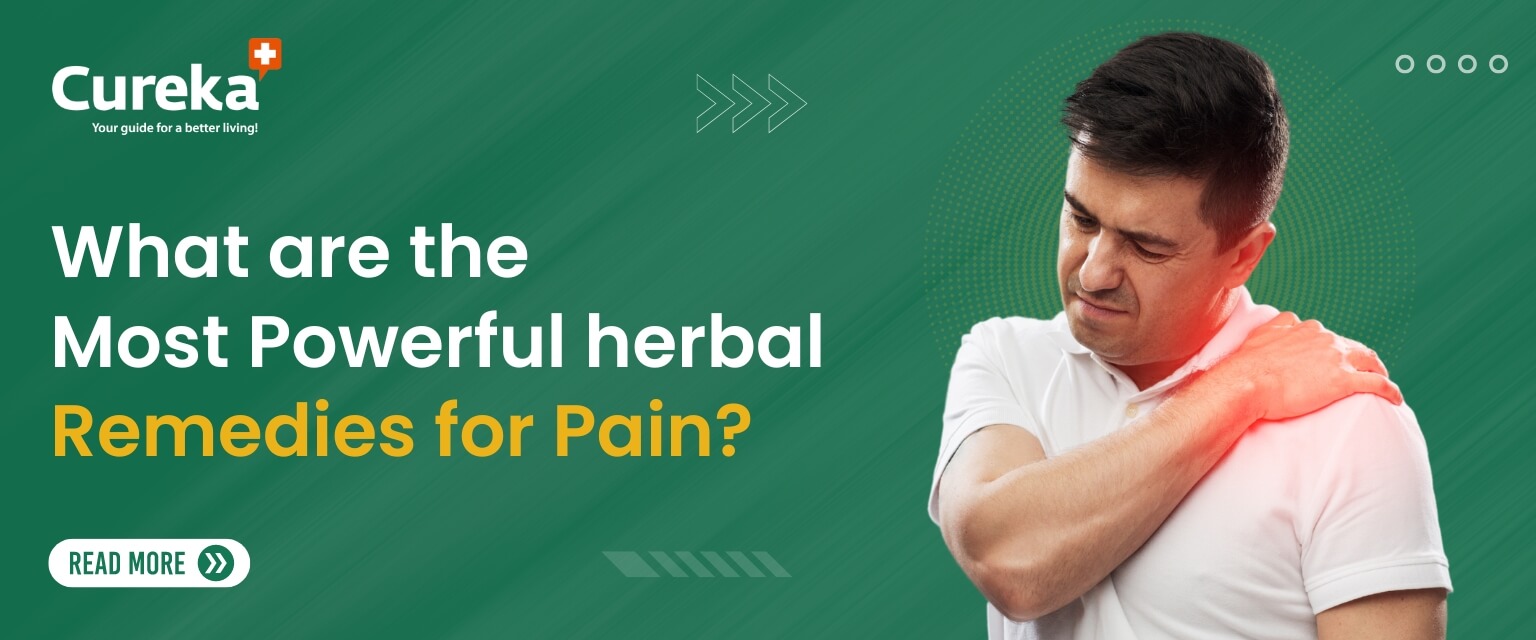What are the Most Powerful Herbal Remedies for Pain?
Have you ever experienced pain that seems to come on and off, even after trying over-the-counter painkillers? Maybe you’ve been dealing with chronic discomfort and are looking for a natural way to manage it. What if we told you that powerful herbal remedies, used for centuries, could provide relief without the side effects of conventional medications?
In this blog, we’ll explore some of the best herbal remedies and natural supplements that have been shown to ease pain, soothe inflammation, and promote healing.
How Do Herbal Remedies for Pain Work?
Many natural supplements and herbs contain potent anti-inflammatory and analgesic properties. Inflammation is often the root cause of pain, and these herbs work by reducing inflammation, calming the body’s response, and promoting healing. While modern medicine has yet to fully explore their potential, many people turn to herbal treatments for their natural ability to manage conditions like arthritis, back pain, and muscle soreness.
Top 5 Herbal Remedies for Pain Relief :
- White Willow Bark
Known as “nature’s aspirin,” white willow bark contains salicin, a compound similar to aspirin that has been used for centuries to treat pain. It’s particularly effective for reducing inflammation associated with conditions like arthritis, joint pain, and back pain.
How It Works: White willow bark reduces inflammation by inhibiting the production of prostaglandins, which trigger pain.
Best For: Joint pain, osteoarthritis, and back pain.
Precautions: Not recommended for children or people with kidney issues.
- Ginger
This popular culinary spice does more than flavor your meals. Ginger is a powerful anti-inflammatory agent, shown to reduce pain related to arthritis and muscle soreness. A study found that ginger can reduce arthritis pain as effectively as non-steroidal anti-inflammatory drugs (NSAIDs).
How It Works: Ginger lowers levels of prostaglandins, which play a key role in pain sensations.
Best For: Arthritis, muscle pain, and general inflammation.
How to Use: Ginger can be consumed fresh, as tea, or in supplement form.
- Turmeric
Turmeric, a staple of Ayurvedic medicine, contains curcumin, a potent anti-inflammatory and antioxidant compound. Studies have shown that curcumin can be as effective as some pharmaceutical anti-inflammatory drugs, making it one of the best herbal remedies for pain relief.
How It Works: Curcumin inhibits cytokines, proteins involved in the inflammatory process, thus reducing pain.
Best For: Arthritis, joint pain, and autoimmune disorders.
How to Use: Turmeric can be added to your diet or taken as a supplement. The recommended dosage is 400-600 mg, three times a day.
- Maritime Pine Bark
This lesser-known remedy has been used for over 2,000 years for its anti-inflammatory and antioxidant properties. Maritime pine bark contains pycnogenol, which not only helps relieve pain but also boosts circulation and aids in the healing process.
How It Works: Pycnogenol targets inflamed areas and improves blood flow, speeding up recovery.
Best For: Joint pain, osteoarthritis, and muscle inflammation.
Precautions: Some people may experience mild stomach upset.
- Chili Peppers (Capsaicin)
The active ingredient in chili peppers, capsaicin, is often found in topical creams for pain relief. Capsaicin works by blocking pain signals sent to the brain and is especially effective for treating conditions like neuropathy, arthritis, and musculoskeletal pain.
How It Works: Capsaicin depletes a neurotransmitter known as substance P, which sends pain signals to the brain.
Best For: Neuropathy, joint pain, and muscle pain.
How to Use: Capsaicin creams can be applied topically to the painful area. Start with a small patch test to avoid skin irritation.
Additional Herbal Remedies for Pain Relief :
Boswellia (Frankincense): Known for its anti-inflammatory effects, Boswellia is commonly used to treat arthritis and improve mobility.
Devil’s Claw: Traditionally used in South Africa, this herb has shown promise for relieving pain from osteoarthritis and tendonitis.
Bromelain: Extracted from pineapples, this enzyme reduces inflammation and pain, particularly in conditions like TMJ and musculoskeletal injuries.
Peppermint Oil: Known for its cooling effect, peppermint oil can be applied topically to relieve tension headaches and muscle pain.
Essential Oils for Pain Relief :
In addition to herbal supplements, essential oils can be a natural option for pain management. Oils like lavender, eucalyptus, and peppermint have anti-inflammatory and pain-relieving properties. These can be inhaled or applied topically when diluted in carrier oil.
Lavender Oil: Inhalation or topical application can reduce pain and inflammation.
Eucalyptus Oil: Helps relieve pain and swelling, especially for conditions like arthritis.
Peppermint Oil: Effective for tension headaches and muscle pain.
Conclusion
Herbal remedies offer a natural and holistic approach to managing pain, especially for those looking to avoid the side effects of conventional painkillers. From white willow bark to turmeric and ginger, these natural supplements have been trusted for centuries. However, always consult with your healthcare provider before starting any new herbal remedy to ensure it’s safe and effective for your specific needs.
By incorporating the best herbal remedies into your routine, you can take control of your pain naturally while supporting your overall health. You can shop herbal supplements in cureka.com at best price.
References:
- Willow Bark (Salix spp.) Used for Pain Relief in Arthritis: A Meta-Analysis of Randomized Controlled Trials – 2023, Oct – https://www.ncbi.nlm.nih.gov/pmc/articles/PMC10607963/
- Clinical trials on pain lowering effect of ginger: A narrative review – 2020, November – https://www.ncbi.nlm.nih.gov/pmc/articles/PMC7754412/
3. Anti-Inflammatory Effects of Curcumin in the Inflammatory Diseases: Status, Limitations and Countermeasures – 2021, Nov – https://www.ncbi.nlm.nih.gov/pmc/articles/PMC8572027/











